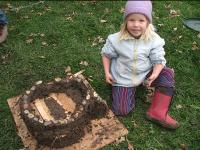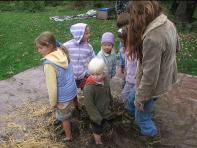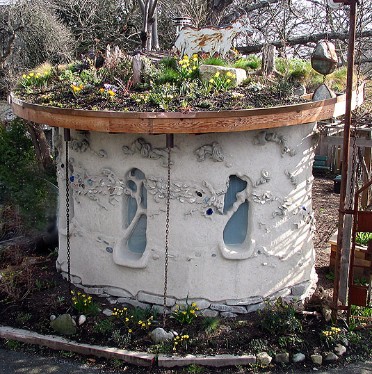NATURAL BUILDING
&
PERMACULTURE
The significant problems we face cannot be solved at the level of thinking that created them.
~Einstein
To move beyond just "having a place to live" and leaving our dwellings and neighborhoods to "go out in nature" is the underlying goal of The Dome Center's Natural/Regenerative building workshop programs.
It is possible to take steps toward creating buildings that reflects our human nature as described in many Paradise stories. Most humans find something missing or hollow in the toxic boxes that we find in modern housing options. Physically, mentally and spiritually lacking, our shelters typically cost us decades of money exchange, compromise our environment and health and encourage inefficient large floor plans that promote, almost demand inputs of material glut to fill them.
The good news is that there is a resurgence in availability and experimentation to synthesize old and new technologies that create a less toxic and inherently more interesting place for humans to live. Educators from The Dome Center have created demonstration projects and held workshops displaying Straw bale and Cob technologies. Along with many others, these technologies help us to feel confident in building our own homes on a human scale. They supplant many of the dangerous chemicals used inside our homes with natural alternatives and build gracefully with much less lumber, metal, or manufactured products.
Many exciting developments are growing the area of Natural Building. The Dome Center promotes education and research in this expanding body of knowledge. With an open-minded approach and constant experimentation we can utilize our natural instincts to build future buildings that will help regenerate natural processes (water flow, soil building, biodegradability) that have been damaged by past and current destructive, building practices.
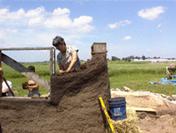
Cob workshop Union, IL
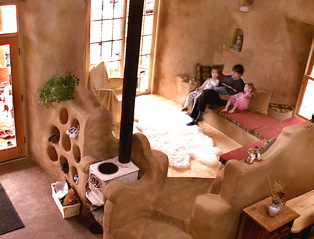
Cob livingroom
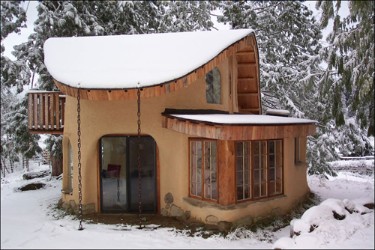
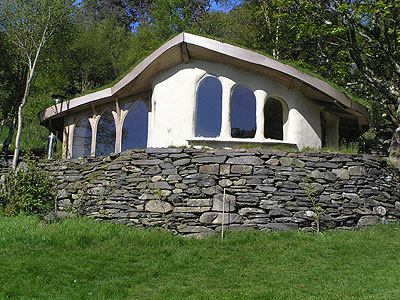
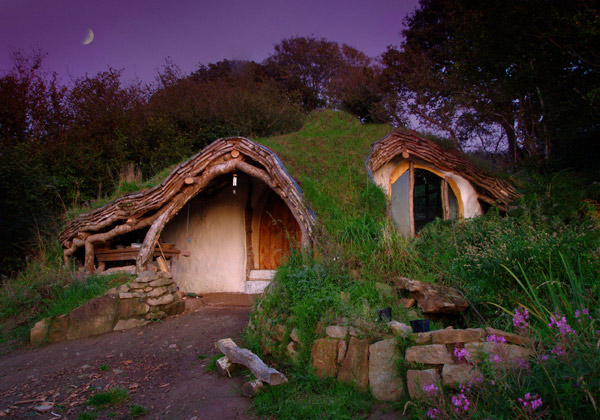
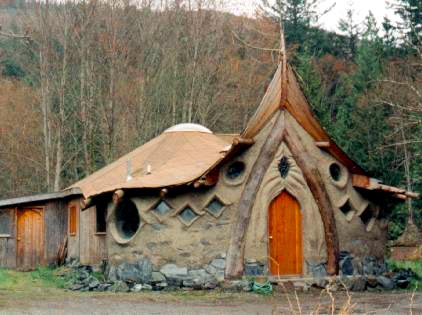
What is What is Cob?
The word cob comes from an old English word meaning lump. When we build with cob we form lumps of clay from the earth, and mix it with sand and straw. It is very easy to learn and everybody in the community can contribute to the planning and building process... children and grandparents alike! Cob is great for making natural and organic shapes like, niches, arches and walls that are curved. Cob buildings are very inexpensive, unlike modern new homes which can take a lifetime to pay for. Cob has been used for making earth homes for thousands of years in all types of climates because they are warm in the winter and cool in the summer and are even suited to rainy climates like the Pacific Northwest or the hot/dry desert.
The old technique of building with cob is eco-friendly because it is non-toxic and recyclable. Additionally, unlike other building methods, it does not pollute, deplete our forests, require invasive mining techniques or even require the use of power tools.
We are faced with an imminent need to change our lifestyles for the health of the planet and its inhabitants. Returning to cob, an abundant and cheap building material, is one of the answers to the problems of diminishing natural resources, environmental degradation, and toxic building materials.
Straw bale - Frequently Asked Questions
How do you use straw bales in buildings ?
The bales can serve as in-filled insulation between post and beam construction or can be load bearing (sometimes called 'Nebraska style'), where the roof rests on top of a special collar that ties the top of the bales together. The bales are alternately stacked on top of a foundation to keep them dry and basically follow the shape of this foundation including the ability to bend to some degree.
What advantage is there to straw bale walls ?
Straw bale wall insulation is it's superior quality. The typically R-40 walls also have a breathing characteristic that artificial insulators do not in addition to their out gassing of toxins. Bales represent a quicker regeneration cycle than wood and can be grown on a site with the grains going for food and the chaff becoming the wall insulation.
Isn't it a short lived wall ?
Baled straw, as we know it, only goes as far back as the mechanical baler. Today there are sound examples of early straw bale walled homes built in the early part of the 20th century. Much like wood in this way, straw bales must be protected from the elements (water in particular) or rot will consume it's structural integrity. Given a reasonable amount of protection such as a roof with overhangs, an impermeable foundation and a maintained plaster coating, straw bale construction will last for centuries. Today's baling machines also provide superior strength bales to many that were built earlier in the 20th century.
Won't it catch fire ?
Tightly baled straw has been proven to burn very poorly. A lack of air within the bale causes it smolder rather than ignite. Typically house fires in modern structures gain strength through a 'chimney effect' caused by the air gap between wood studs. This, in addition to dried woods likeliness to ignite quickly makes non straw bale wood frame housing more fire susceptible. Wall plasters (below) further decrease the likelihood of a fire. Using standard fire testing, plastered straw bale walls have received very high ratings.
What do I use to cover the walls ?
With the recent revival of straw bale construction concrete stucco has been the major choice for plaster. More recently, many experiments have been done with earthen based plaster. Typically several successive coats an outer coat that includes lime creates a long lasting, environmentally friendly and inexpensive plaster.
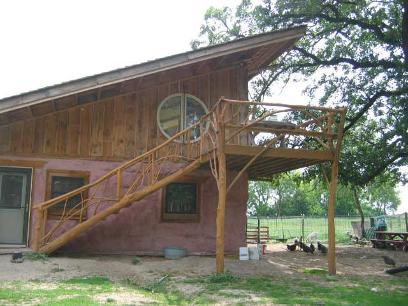
Strawbale office and learning center at Angelic Organics Learning Center
Permaculture
"Permaculture" is a term developed by Australian born Bill Mollison to describe a system of agriculture and living that balances with nature and is inherently sustainable. It helps to define zones of living and functioning in such a way as to lessen the inputs needed as one system feeds another.....
Though not yet teaching Permaculture courses, The Dome Ed Center is strongly committed to promoting the Permaculture principle of interconnecting all the various systems that support us: housing, food production, waste, water, heating/cooling etc.
The Dome Education & Gathering Center utilizes portions of Permaculture teachings in our Mulch Gardening classes as well as Natural / Regenerative building workshops being promoted through local community colleges and extension work.
This approach to observing everything we do as "mindful" humans can definitely be more 'fun' in our dance through life. We then take our feelings of the sacredness of even the mundane to new heights.
For more specific information on Permaculture (from other organizations) choose one of the following;
Permaculture at The Farm in Tennessee
